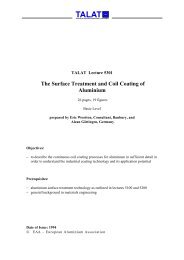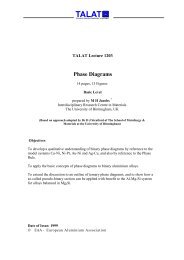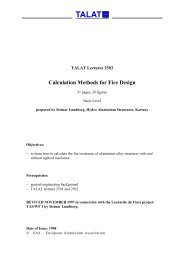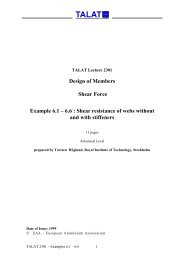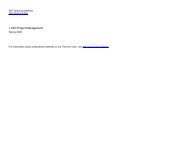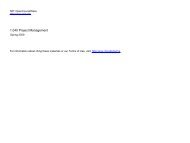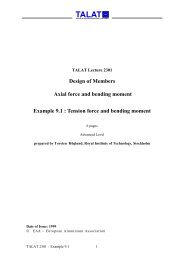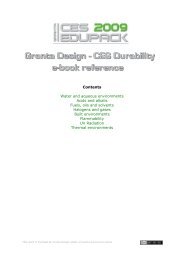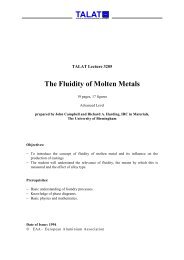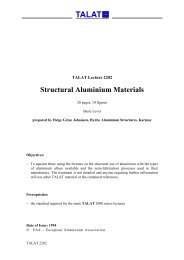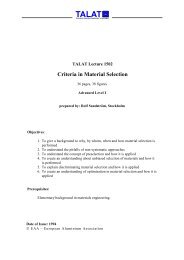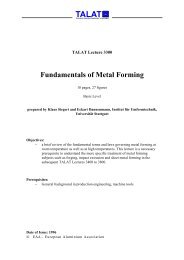TALAT Lecture 3502 - CORE-Materials
TALAT Lecture 3502 - CORE-Materials
TALAT Lecture 3502 - CORE-Materials
You also want an ePaper? Increase the reach of your titles
YUMPU automatically turns print PDFs into web optimized ePapers that Google loves.
The forming force Ftot is applied through the punch. The deformation zone extends<br />
from plane 0, where the material is plastic, to plane 1. At the outlet of the opening, the<br />
material moves out without constraint so that the axial stress, σz = 0. From this plane<br />
onward, the axial stress increases in the strained zone as a compressive stress up to the<br />
plane 0 and attains the value σz0 = Ftot/A0. The principal stresses in the radial, σr and<br />
in the tangential, σt direction are equal. According to Tresca: σr = σz - kf<br />
During hollow forward impact extrusion, a similar complex (3-dimensional) state of<br />
compressive stress with σr, σz and σt exists. The radial stress σr is the largest<br />
compressive stress. For thick-walled hollow bodies σr ≈ σt, for thin-walled ones σt ≈<br />
(σz + σr)/2.<br />
Force-Distance Curve<br />
Figure <strong>3502</strong>.03.13 illustrates a typical force-distance curve for a quasi-stationary impact<br />
extrusion operation using the solid forward impact extrusion process as an example.<br />
There is a rapid linear rise of the punch force due to the elastic deformation in the<br />
system tool - work-piece (region 1). The work-piece is pressed into the opening and<br />
deformed plastically. The maximum force attained is a result of both the deformation of<br />
the work-piece elements as well as the transition of the friction from static to dynamic at<br />
the impact extrusion "shoulder". The work against friction (AR2) between the holder<br />
(container) and work-piece decreases with increasing deformation so that the force starts<br />
to drop. The deformation force, the frictional force between die walls and work-piece<br />
over the stroke as well as the frictional force between punch and container over the<br />
stroke remain constant during the stationary deformation process.<br />
F st<br />
F 1<br />
F 2<br />
1<br />
P 1<br />
alu<br />
Training in Aluminium Application Technologies<br />
2<br />
P 2<br />
S1 S2 Distance travelled by press punch, S<br />
Source: K. Siegert<br />
Force-distance curve during<br />
solid forward impact extrusion<br />
<strong>TALAT</strong> <strong>3502</strong> 13<br />
3<br />
4<br />
1 - Nonstationary forming process<br />
"compressing" and<br />
"pressing through"<br />
2 - Energy A R2 required to overcome<br />
friction between work-piece<br />
and holder<br />
3 - Forming energy and energy A R3<br />
for overcoming friction between<br />
die walls and work-piecel<br />
4 - Energy A R4 for overcoming friction<br />
between pressing punch and holder<br />
Force-distance Curve during Solid Forward Impact Extrusion <strong>3502</strong>.03.13



